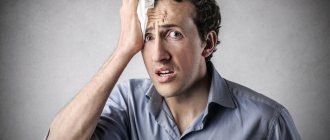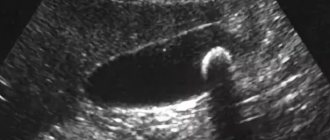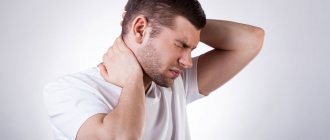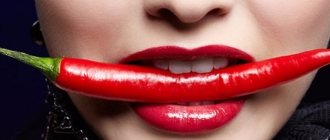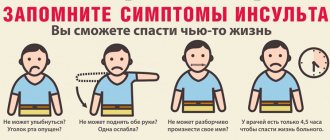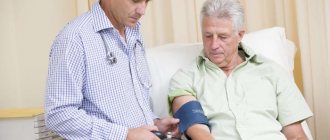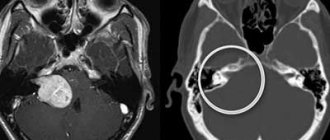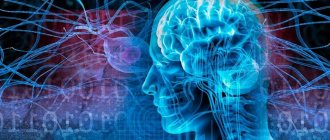Stroke (apoplexy, stroke) - a disorder of cerebral circulation - is considered a disease of old age, since the main risk factors are cardiovascular diseases, atherosclerosis, and hypertension. However, now more and more often able-bodied people become patients of neurologists.
Stroke in young people is not uncommon nowadays. This disease is rapidly getting younger. It is sad that emergency doctors often perceive the symptoms of a stroke as signs of other diseases, including psychogenic ones.
Causes of stroke at a young age
- increased levels of protein in the blood, diseases of the circulatory system;
- pathologies of the heart muscle and blood vessels;
- diabetes;
- various infectious diseases;
- benign and malignant tumors;
- side effects of drugs;
- bad habits.
An increased level of protein in the blood is an alarming symptom, which is an important indicator of protein metabolism. The higher the protein level, the more serious the disease. This may be an autoimmune process or a bacterial disease, as well as some chronic pathologies, such as polyarthritis. High levels of protein are the cause of arterial blockage and the formation of microthrombi.
Infectious diseases can also become a risk factor for an attack - they affect the biochemical composition of the blood. Examples of such infections are encephalitis, meningitis, and herpes.
Diabetes mellitus, both type 1 and type 2, affects blood vessels and the heart. Pathology in the system causes disturbances in cerebral blood flow.
Tumors (benign and malignant), as they increase in size, directly affect blood circulation and mechanically compress blood vessels.
Side effects of some medications may include conditions that can lead to stroke. Recently, with the development of social networks and the Internet, the problem has acquired frightening proportions. At a correspondence appointment, “specialists” prescribe medications without even looking at the patient’s tests. Patients themselves can, without the help of doctors, find a description of any drug, prescribe it for themselves (again, without tests or examinations) and buy it without a prescription (also via the Internet).
Of course, not all medications have such serious consequences. You need to be especially careful about hormones (or those substances that affect their levels), including birth control pills.
An unhealthy lifestyle is a topic that a specialist of any profile is ready to support. Drinking alcohol, smoking, and physical inactivity are the main risk factors. Add to this constant stress, nervous tension and lack of proper nutrition habits (in particular, a lack of protein in food and a large amount of processed foods and fast food) - and now we already have every chance of getting a stroke at a young age, the causes of which are so banal that many don't even believe it.
Expert opinion
Author: Polina Yuryevna Vakhromeeva
Neurologist
Stroke at a young age, according to WHO, is suffered by patients between 15 and 45 years of age. Young patients may rarely suspect acute cerebrovascular accidents, since stroke is traditionally considered a disease of older people. The incidence of ischemic stroke in young people is 5-14%, and women are more susceptible to the disease than men. Heart defects, surgeries on this organ, and hormonal imbalances significantly increase the risk of developing ischemic stroke among young people. The cause is most often dissection of intracranial and extracranial arteries. In second place is cardiogenic embolism.
In young patients, the mechanism of stroke is different than in older patients, so a different approach to diagnosis and therapy is required. At the Yusupov Hospital, according to the protocols for the examination and management of such patients, the specifics of stroke in young people are taken into account. Those studies are prescribed that are most appropriate if acute cerebrovascular accidents are suspected in young patients. During the rehabilitation period, exercise therapy instructors work with patients.
Prevention of stroke in patients with risk factors includes control of blood pressure, blood sugar levels, smoking cessation, adjustment of necessary drug therapy, adequate physical activity and diet.
Risk factors for stroke in young people
Genetics
A meta-analysis of twelve studies involving almost 60 thousand people found that there are four genes that influence susceptibility to apoplexy. In simple terms, if your parents (or grandparents) suffered an attack, then you should monitor your health very carefully.
Pathologies, anomalies and diseases of the heart and blood vessels
People with heart problems (ischemia, atrial fibrillation, valve pathologies) and developmental anomalies of this organ must monitor their condition and undergo regular examinations.
Diseases of the veins and arteries are also risk factors, but if you or your loved ones have already been diagnosed with them, it is important to monitor the quality and quantity of food, include physical activity in your regimen and regularly visit specialists to prevent complications.
Gender is a risk factor
In old age, the risk factor is male gender, but at a young age women are at risk, especially those taking hormonal drugs and smoking. The fact is that these two factors affect blood clotting - they increase it and, accordingly, can cause an ischemic stroke.
Women who have recently given birth are also at risk. Pregnancy and childbirth are very difficult processes, and often the body increases blood clotting (especially after childbirth) to avoid large blood loss. This causes thrombosis.
Metabolic disorders
A wide range of metabolic problems lead to the development of strokes at any age. Sad statistics show that currently a very large number of elderly people suffer from metabolic syndrome and type 2 diabetes. These conditions negatively affect the condition of blood vessels.
A problem with metabolism is a problem of reducing the overall quality of life: physical inactivity, imbalance of dietary fat, polyhypovitaminosis. And this is a factor that we can influence, for example, giving up bad habits, improving nutrition, moving more. We hear all this advice regularly, but few people fully understand their importance.
Emotional factor
Many diseases are attributed to stress. And for good reason. The first danger of chronic nervous tension (and lack of sleep) is a change in the level of cortisol, which “pulls” other hormones with it. Constantly being “on your nerves” is a direct route to a neurologist. High blood pressure, headaches, chronic fatigue syndrome, constant overload - these are the terrible realities of the modern world.
Controlling emotions and lifestyle are factors that we can also influence. But, unfortunately, they are rarely paid attention to in the pursuit of success and career growth. It’s even sadder that even after the attack has already happened, young people continue to live the same way, which should not be allowed at all.
Life will not be the same, we must admit it
Denis Semenov, looking back, talks about his post-operative condition and rehabilitation: “For the first four years after the stroke, I did not undergo rehabilitation at all. I just didn't know it was important.
Maybe if I started studying right away, my speech would be completely restored. And the ability to walk too. I already know that I will never be able to speak like a speaker, I will never be able to run and jump like an athlete, but still I tried to do something. Better late than never.
And there is no need to try to reach the level that was before the disease. Many people try, but it is impossible... This also needs to be accepted. Admit it: you can write lyrics, but you can’t play the guitar.”
“The most important thing is not to slide down, to try to move forward,” says Feras Abdoldin, recalling those days. – I started rehabilitation immediately after the course of treatment. He studied speech, gymnastics, and underwent physical therapy. I spent many times in rehabilitation. How to talk, walk, read. It took me a long time to remember how to do basic things. Now I'm learning to program again. I remember the algorithm, but it's very difficult to do.
I sometimes forget words and remember, I remember because I remember - I knew it. But it’s as if there’s a long distance between me and knowledge.
If it weren't for rehabilitation, I wouldn't be able to walk or move my arm. But you can exercise not only in rehabilitation centers... At home, on your own, force yourself. It's difficult, but you do it. The only way. If you give up, everything you’ve gained will very quickly come to naught.”
What types of stroke do young people suffer from?
Ischemic stroke
This is a violation of blood supply with damage to brain tissue and changes in its functions. Ischemic stroke at a young age is accompanied by softening of areas of brain tissue. The cause of ischemic stroke is insufficient blood supply due to the development of thrombosis or embolism. By the way, among young people, the ischemic type is more common in women.
In simple terms, blood clots (blood clots) or foreign objects (emboli) that normally should not be present in the bloodstream (or lymph flow) enter the vessels of the cerebral circulation and block it. This leads to a lack of brain nutrition, oxygen starvation and tissue death.
Ischemic strokes account for up to 85% of all strokes and are in second place among the causes of death. This type of attack is more common in patients over 60 years of age, but younger patients can also become victims.
Hemorrhagic stroke
Previously, this stroke was called a hemorrhage. Actually, this is a hemorrhagic type of stroke, when, due to increased permeability of the walls of blood vessels or their rupture, blood spills onto the brain.
Most often, hemorrhage develops during the day against the background of severe stress (what is called “getting nervous” or “freaking out”).
How it starts
Denis Semenov is a journalist and writer. He described his life before and after the stroke in the book “The Golden Salamander.”
“In the evening I went to the bathhouse, and in the morning I felt that I couldn’t see anything, my head couldn’t think straight... I thought maybe I had caught a cold and decided to get some more sleep. I didn’t know then that the first hours during a stroke are the most important.
The doctors said that if I had gone straight to intensive care, in the first six hours it would have been possible to prevent the death of brain cells without surgery. They call this time the “therapeutic window.”
But I didn’t know all this and slept through the most important hours. And over the next four years he underwent fifteen operations.”
Feras Abdoldin , an IT specialist and father of many children, suffered a stroke at the age of 42.
“I was talking on the phone and suddenly I felt something strange... I got up, walked around and dropped the phone... I was surprised, continued the conversation - and again the phone fell out of my hands. Then a third time. Then for some reason I shouted: “call an ambulance.” But I couldn’t say anything more - there was no more speech.”
Signs of stroke in young people
A sharp circulatory disorder has its own signs associated with changes in brain function:
- the right or left side of the body goes numb;
- sharp deterioration of vision (in one or both eyes) and hearing;
- dizziness, severe headache, loss of consciousness;
- cold sweat, tachycardia, dry mouth;
- memory losses;
- speech disorders.
Even one of these symptoms should cause at least concern, and a person should definitely visit a specialist and undergo an examination.
How to determine if a person has a stroke. Ask him to smile - if blood circulation is poor, one side of the face “does not work” and the smile will turn out crooked. You can also ask for a show of hands. Ask the person their name and what day it is - confusion and memory loss are very common after a stroke.
If, despite the presence of all symptoms, a person claims that everything is fine with him, shine a flashlight in his eyes. If the blood supply is disrupted, the pupils will react differently. But in any case, remember, it’s better to be safe and call an ambulance, naming all the symptoms and the time when they were discovered.
It’s worth talking separately about how carelessly we sometimes treat headaches. “It’ll pass now,” “give me something for the headache/pressure,” “dizzy,” “I’m tired,” and many more phrases that we hear or say ourselves. If you begin to notice regular headaches, lethargy, and fatigue, then you should not go to the pharmacy for another painkiller or blame it all on hard work, but consult a doctor.
Often we overestimate our strength and really get tired, but, as doctors say, it’s better to be safe, because it will be much more difficult to deal with the consequences.
First aid
If the victim shows one or more of the above signs, then you need to call an ambulance. It is prohibited to give the victim any medications at this time. The man must be laid on a flat surface with his head slightly raised. A cold compress is applied to the back of the head, and a heating pad is applied to the lower extremities. It is important to ensure that the victim is in a state of complete rest, not allowing him to move or stand up abruptly. If a person is indoors, open the windows to allow fresh air to flow in. When vomiting occurs, tilt your head to the sides so that he does not choke. At the first signs of clinical death, artificial respiration and chest compressions are performed.
Treatment of stroke in young people
If an attack is quickly identified and the patient is hospitalized, the treatment prognosis is favorable. And all measures are aimed at eliminating the consequences and preventing a second strike.
In some cases, surgical intervention is necessary (for hemorrhages), then therapy begins. Drug treatment with several groups of drugs at once is of great importance:
- angioprotectors (to protect blood vessels and prevent a recurrent attack);
- anticoagulants (to reduce blood clotting and prevent blood clots);
- immunomodulators (since at a young age, stroke is often a consequence of problems with the immune system, especially in women);
- medications that prevent tissue death;
- vitamins.
The full range of medications is prescribed only by a neurologist and always after an examination, because depending on the type of disease, treatment may differ.
Lifestyle after an attack is important (if not decisive). Maintaining a balance of macronutrients and monitoring the intake of microelements are key factors that are needed for prevention and improving the quality of life. Be sure to review the list of medications you take regularly and, if necessary, eliminate or replace them.
For patients of any age during the rehabilitation period, there are three key tips - watch your diet, add physical activity and avoid overexertion.
